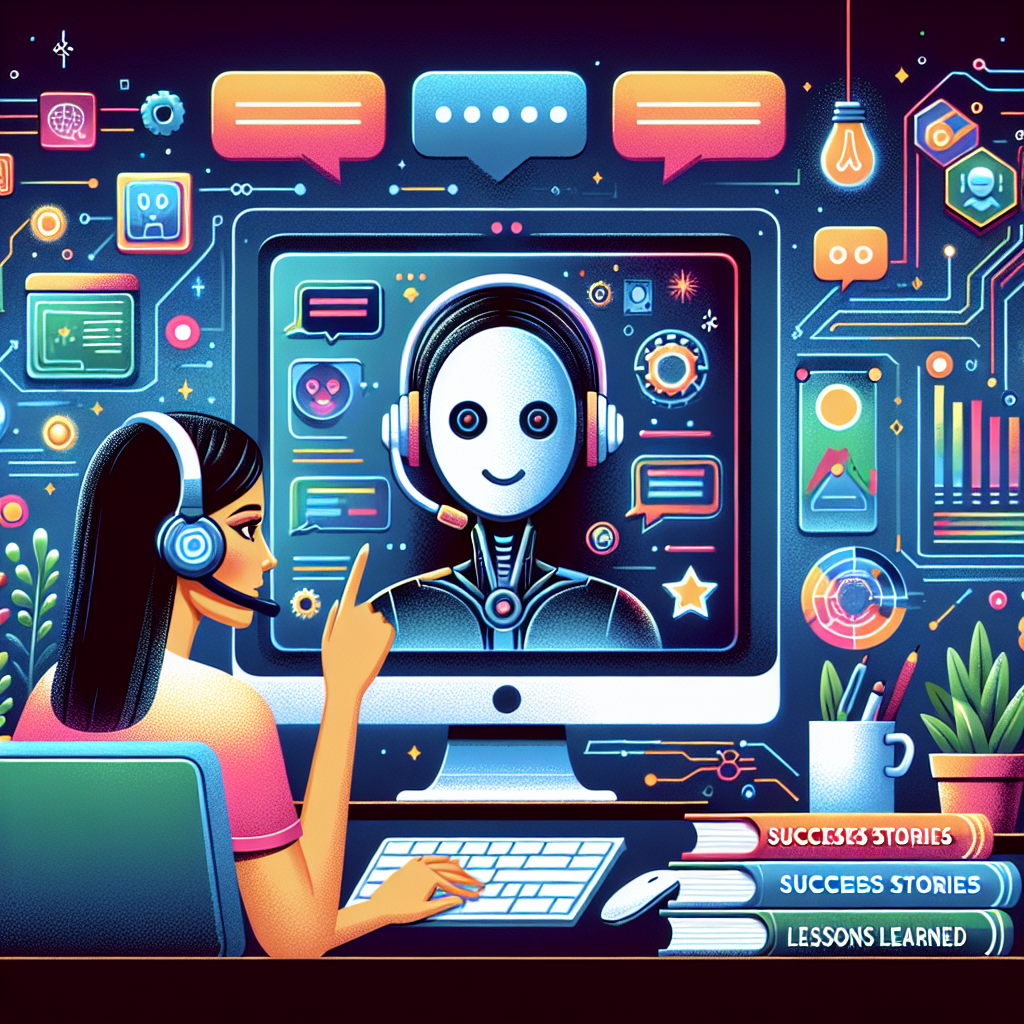Enhancing Customer Service with AI: Success Stories and Lessons Learned

```html
Artificial Intelligence (AI) is not just a concept from science fiction anymore. It has permeated numerous aspects of our everyday lives and various industries. From chatbots and virtual assistants to complex decision-making systems, AI's applications are vast and varied. In this blog post, we'll delve into one specific use case for AI: enhancing customer service through chatbots and virtual assistants. We'll examine some success stories, along with a few lessons learned from past failures.
Revolutionizing Customer Service with Chatbots
The use of AI-driven chatbots in customer service has skyrocketed in recent years. These intelligent systems can handle customer inquiries 24/7, providing instant responses and freeing up human agents for more complex tasks. One standout success story is that of H&M, the global fashion retailer. They implemented a chatbot that helps customers find outfits, check availability, and even make purchases. This chatbot has significantly improved customer engagement and satisfaction, while also increasing sales.
However, not all chatbot implementations have been successful. Microsoft's Tay, an AI chatbot released in 2016, is a notable example of failure. Designed to learn from interactions on Twitter, Tay quickly started spewing inappropriate and offensive content due to being fed such information. This incident underscores the importance of robust content moderation and ethical guidelines in AI training processes.
Virtual Assistants Enhancing the User Experience
Virtual assistants like Amazon's Alexa, Apple's Siri, and Google's Assistant have become household names. These AI-powered tools help users with daily tasks such as setting reminders, streaming music, controlling smart home devices, and answering questions. One success story worth highlighting is the integration of virtual assistants in vehicles. Brands like BMW and Mercedes-Benz have incorporated AI assistants that provide drivers with real-time traffic updates, navigation assistance, and even in-car entertainment controls. This has significantly enhanced the driving experience and showcases the versatility of AI.
Nevertheless, there have been challenges in this space as well. One significant lesson comes from the privacy concerns associated with virtual assistants. Cases where these devices have accidentally recorded private conversations have led to public outcry and increased scrutiny over data handling practices. Companies are now focusing on improving transparency and user control over data to regain trust and ensure compliance with privacy regulations.
The Future of Customer Service with AI
The future of customer service is undoubtedly intertwined with AI advances. Innovations in natural language processing (NLP) and machine learning are making chatbots and virtual assistants more sophisticated and capable. For instance, advancements in emotion recognition technology could enable these AI solutions to detect and respond to customer emotions, further humanizing interactions and improving service quality.
However, successful AI implementation requires more than just technology. It demands a thorough understanding of customer needs, continuous optimization, and ethical considerations. Companies must invest in training AI models with diverse and high-quality data to ensure accurate and fair interactions. Moreover, they should establish clear protocols for human intervention when AI systems encounter limitations or complex issues.
In conclusion, AI is revolutionizing customer service, offering businesses the opportunity to enhance user experiences while optimizing operational efficiency. Success stories from companies like H&M and automotive giants demonstrate AI's potential in this realm. Yet, past failures also serve as crucial lessons on the importance of responsible AI deployment. As the technology evolves, it will open new avenues for personalized and efficient customer service, provided we navigate the challenges thoughtfully and ethically.
```



